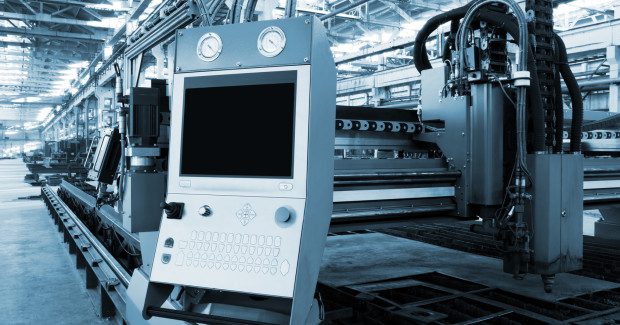2014 Metal Cutting Outlook: Unprecedented Automation
As the reach and complexity of automated processes expands, about 30 million ‘baby boomers’ are expected to retire from the workforce by 2020. Rajas Sukthankar of Siemens Industry explores how this will lead to much more automation in the manufacturing sector.
Posted: January 8, 2014
With the GDP having grown at a steady rate in 2013, we see the manufacturing economy improving. Though the unemployment is falling, the job market in manufacturing, especially the prime metalworking sectors, continues to suffer from a lack of skilled labor. About 30 million ‘baby boomers’ are expected to retire from the workforce by 2020. We expect this trend to lead to more automation in the manufacturing sector.
Preparing our workforce for the high skilled manufacturing jobs of the present and future is a major challenge ahead of us. We expect manufacturing job opportunities in 15 out of 18 market sectors covered under ISM (Institute for Supply Management; Tempe, AZ) to be strong in the coming years, with areas such as mining to stay weak.
In the short term for 2014, we will not see a big boost in capital spending, however, due to the hesitancy in industry to invest that is owed to political uncertainty. As business continues to improve, an uptick in capital spending will likely occur in the latter half of 2014.
In terms of market sectors specifically, automotive is still very steady, though the big investments for the new powertrain programs are largely implemented and under way. In 2014 we still expect to see 15+ million units of light auto vehicle sales to U.S. consumers.
The new multi-speed transmission programs will result in the next surge of cap spending. In aerospace, commercial will be a bright spot, led by the 777X program. Agricultural equipment remains steady and the energy sector is another bright spot, especially with the new finds and resulting uptick in domestic natural gas and oil production. The mining industry is slower, due to the commoditization and foreign competition.
Metalworking will be a growth area in 2014. Business activity for American companies in Europe and China is also spurring export growth, owing to demand for our goods and weak dollar, while some emerging economies continue to struggle with their weak currency.
In the technology area, increased automation and robotics continue to lead the way. This is a fact in nearly all industries today, not merely the historically strong sectors of automotive and electronics manufacture.
Additionally, electric drive and servo technology have fast-tracked recently and, in many cases, replaced traditional hydraulic and pneumatic motion control, causing machinery and equipment builders to re-evaluate their design strategies. This trend will continue and expand in the coming years.
Another fascinating development is the network-centric machine that capitalizes on the power of the Internet to incorporate condition monitoring and even self-diagnostics. With the constant evolution in sensory feedback devices and sophisticated self optimizing feedback algorithms, new self-adapting machining concepts can be a reality by the end of this decade.
Machine and equipment builders will also respond to the rapidly emerging 3D technologies of additive manufacturing, though the production potential in that area is not yet fully realized due to technological and cost constraints.
Again, all these developments in our industry will require an entirely new skill set among the workforce, so work force training strategies need to be adjusted accordingly. Labor skill needs, the surge in cheaper domestic energy and the manufacturing of more complex and larger parts for certain market segments represent true potential bright spots for manufacturers and their supply chain.
On the labor issue, there is no doubt that a greater collaboration between manufacturing and tech schools is essential today, for the dual purpose of enhancing the current workforce capabilities and to train the next generation work force. The work force will have to constantly acquire new skills to deal with the complexities of new automation concepts incorporating advanced technologies.
The complexity of automation in advanced manufacturing will increase from the job shop to major production facilities. We will see the need to bridge the divide between the digital CAD/CAM design world and physical manufacturing worlds in ways yet unimagined. The abundance of natural gas available from shale fracking will have a profound impact on our commerce and industry.
For example, the Wall Street Journal cites that, with 20 percent of fuel consumption currently in the diesel trucking business, we can see new opportunities in NG (natural gas) utilization, which will spark the development of new engine concepts and capital spending in new manufacturing equipment.
Finally, in the area of manufacturing more complex and larger parts, the increase in robotics and additional automation will quickly impact the contact and non-contact machining worlds. As the accuracy requirements of mass-produced manufactured parts increase, so will the use of robots and sophisticated automation in both the machine tool and the metal forming machinery worlds of laser, waterjet, forging, casting, metal spinning and others.
Without a doubt, this is a very exciting time to be in industrial manufacturing. Both the chipcutting and metal forming sectors are being challenged to innovate new motion-centric concepts involving special kinematics to increase the productivity of our machine builders and end users. Such dynamism drives the thought process on engineering and product development teams, as well as the sales and service operations worldwide.
The need for expanded training remains a critical concern. As a result, OEM involvement with both the tech school and customer communities for the training of current and future workforces is a vital component in our global business thinking, today and into the future.
We all know that our world relies on manufacturing every day. OEMs must offer innovative products and solutions to their customers that help them achieve peak productivity at a lower cost point. Our company remains committed to helping American manufacturers succeed in domestic and international markets.












